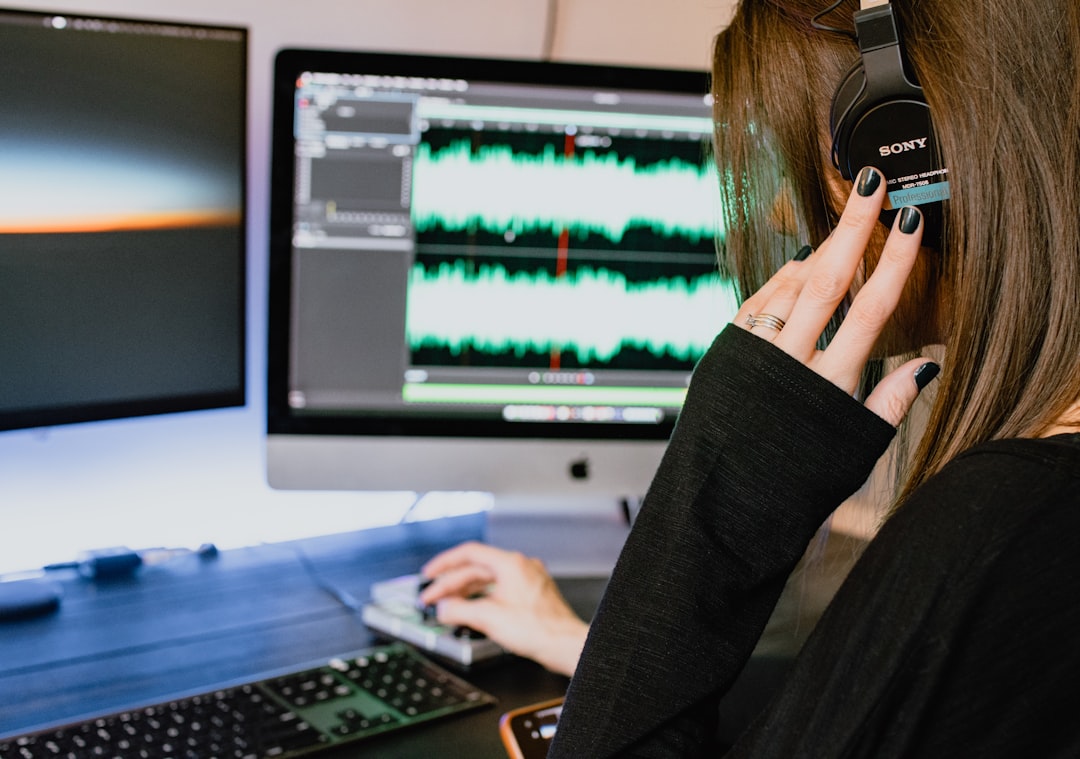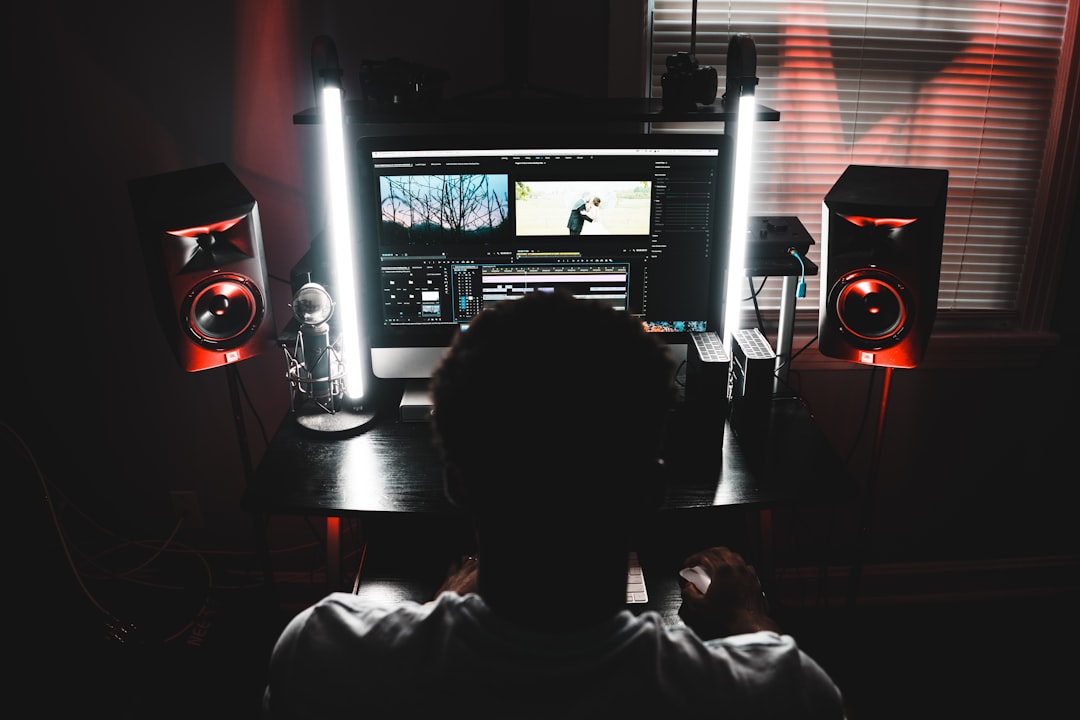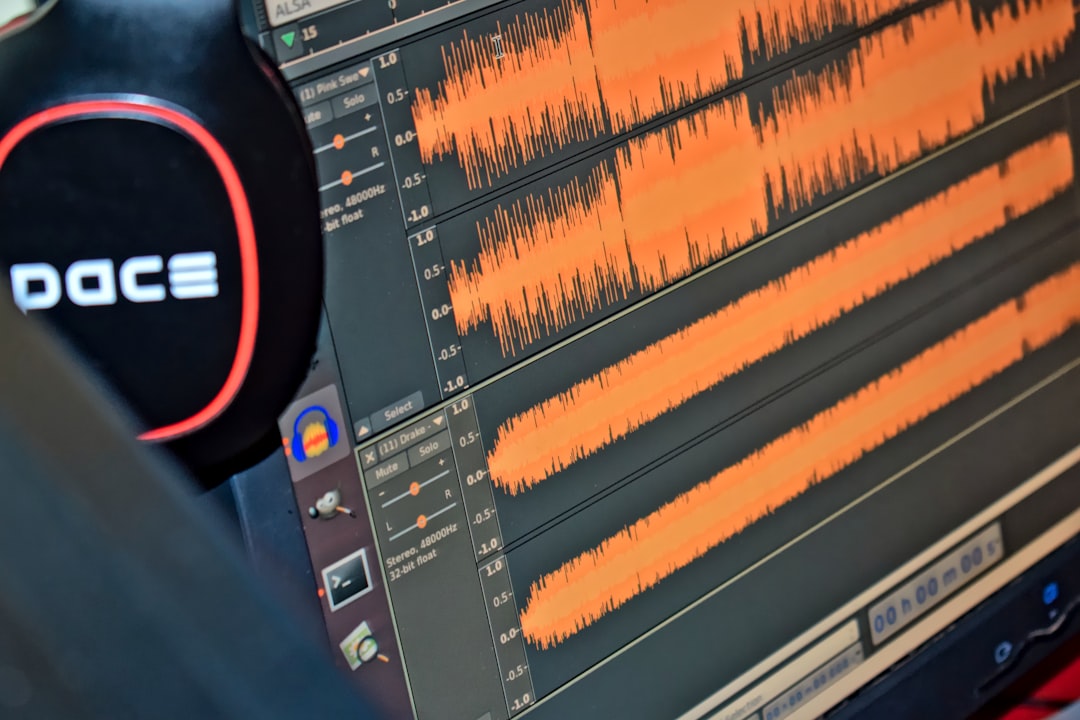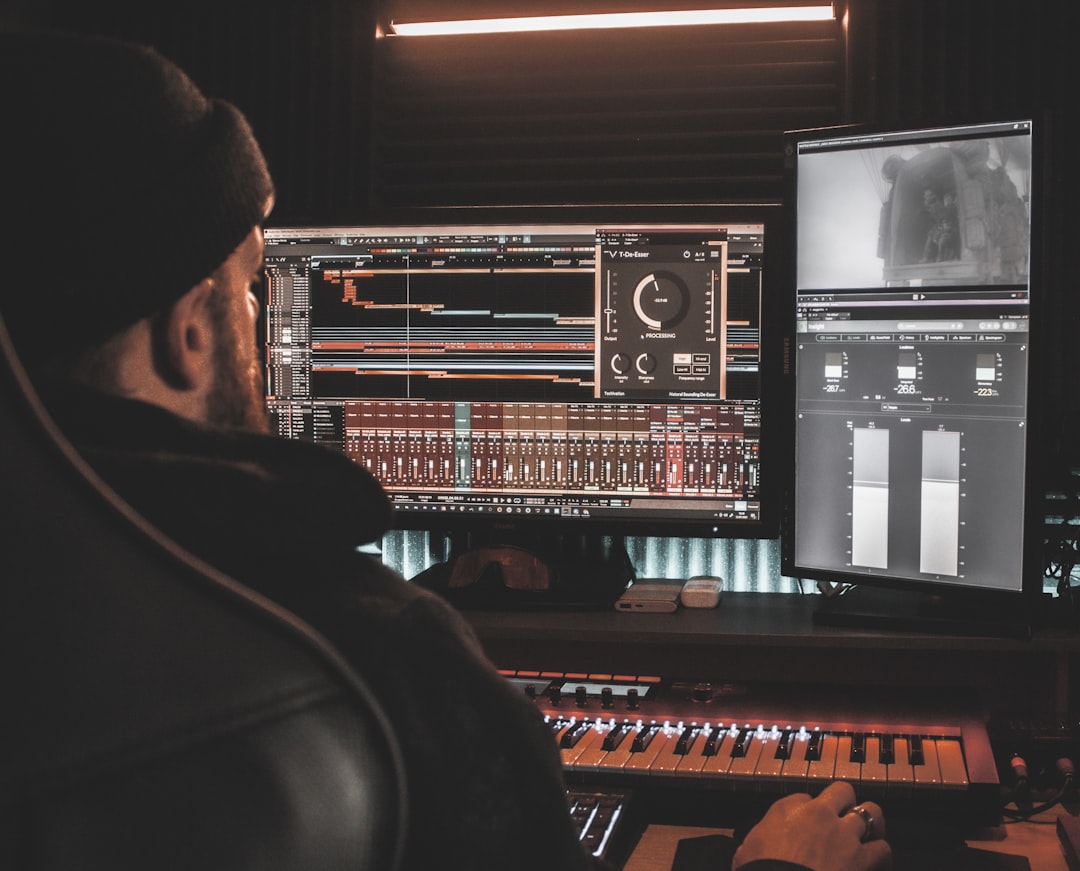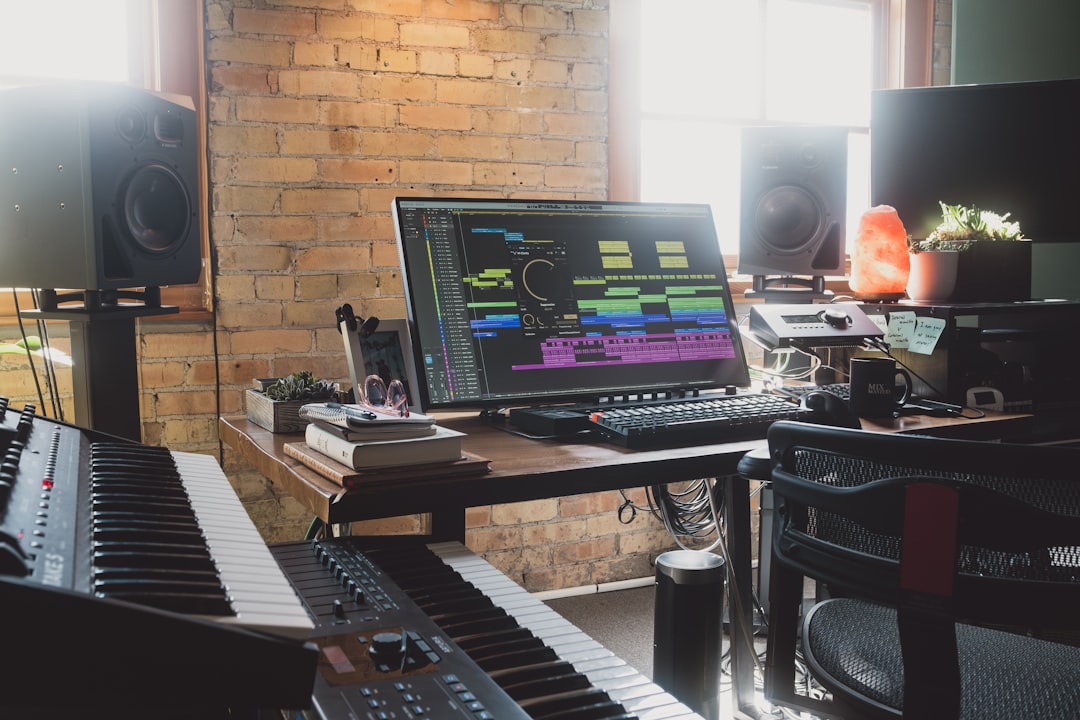DaVinci Resolve's Audio Waveform Sync A Precision Tool for Multi-Camera Editing
DaVinci Resolve's Audio Waveform Sync A Precision Tool for Multi-Camera Editing - Audio Waveform Alignment Basics in DaVinci Resolve
DaVinci Resolve's capability to align audio waveforms is central to ensuring accurate syncing of audio and video, especially when dealing with multiple camera angles. This is crucial for multi-camera editing, as managing various audio sources can be complex. Viewing the audio waveforms directly in the timeline provides a visual guide to assist in navigating and adjusting audio tracks. It's not just about viewing, however; Resolve incorporates automated syncing features and encourages organized project management. By mastering these features, editors can significantly simplify the audio import, alignment, and editing workflows. This, in turn, boosts overall project efficiency and quality.
DaVinci Resolve's approach to audio waveform alignment relies on sophisticated algorithms that dissect the frequency characteristics of audio signals. This method ensures precise syncing of audio and video, even when dealing with numerous cameras and complex audio landscapes. The software utilizes phase correlation methods to spot matching waveform patterns across diverse audio tracks, making automated syncing a reality.
Looking beyond simple aesthetics, the waveform visualizations in DaVinci Resolve provide valuable insights into the nuances of audio. We gain a deeper understanding of volume variations, pitch fluctuations, and rhythmic patterns, influencing how we approach the editing process. Waveform alignment is especially helpful in situations where microphones might record slight variations in frequency or timing due to their physical placement, ensuring all camera perspectives remain in perfect synchronization.
DaVinci Resolve's adaptability extends to supporting a broad range of audio formats. This allows for insightful analysis and alignment of audio from diverse recording devices. By integrating multi-source audio into a singular output, we gain better control and consistency.
The waveform display reveals more than just the sound's shape. We can quickly identify potential issues such as audio clipping or distortion, allowing editors to rectify these problems during the editing phase. This capability is particularly advantageous when working with multiple sound sources, simplifying the task of synchronizing dialogue and sound effects across various camera angles.
The automated synchronization feature offered in DaVinci Resolve accelerates workflow considerably, saving valuable time that would otherwise be spent on manual alignment, making it a boon for projects with strict deadlines. Examining the nuances of waveform patterns can reveal potential recording issues, such as background noise or signal interference, encouraging pre-emptive solutions before the final stage.
Ultimately, the waveform alignment capability in DaVinci Resolve serves as a practical demonstration of sound wave principles. It showcases how amplitude, frequency, and phase relationships are fundamental to sound, moving beyond being a mere editing tool and demonstrating fundamental physics through its operation.
DaVinci Resolve's Audio Waveform Sync A Precision Tool for Multi-Camera Editing - Multicam Editing Feature for Event and Interview Footage
DaVinci Resolve's multicam editing feature is a valuable tool for streamlining the editing process, particularly for events and interviews captured with multiple cameras. The ability to sync footage using either audio or timecode simplifies the initial setup, ensuring a cohesive workflow. Once synced into a multicam clip, the footage can be readily manipulated in the Edit page, allowing for swift transitions between different camera angles. This flexibility is crucial for choosing the most impactful perspectives throughout the event or interview. While primarily designed for multi-camera projects, it also offers interesting possibilities even if you are working with a single camera, essentially allowing you to "simulate" multiple angles by utilizing its editing features. Features like scratch audio for syncing and Sync Bins for footage management enhance the usability of this tool for complex projects. The overall impact of this feature is to provide a more fluid and comprehensive editing experience, offering control over the narrative presented in the final video.
DaVinci Resolve's multicam editing tools are particularly useful for events and interviews where multiple cameras are used simultaneously. The syncing of these various camera angles can be done by aligning audio tracks or using timecodes embedded during the recording process. This simplifies editing significantly. The process typically starts with selecting the desired files in the media library and creating a new multicam clip that incorporates them. After that, this multicam clip can be placed on the timeline in the Edit tab for further adjustments and transitions between different angles.
Switching between camera perspectives during editing is effortless—you can click on the desired shot in the dedicated multicam viewer or press a corresponding number key on the keyboard. Resolve also smartly leverages the individual audio from each camera to help in syncing the footage. When creating a multicam clip, it is vital to set the correct frame rate and sync settings to ensure everything plays back smoothly and is precisely synced.
DaVinci Resolve offers Sync Bins as a feature to help manage and sync the various camera feeds, further streamlining the editing process. Several syncing methods are available, including the use of common In and Out points which are a boon to efficiently align clips quickly. Interestingly, multicam editing can even be used with just a single camera to create a simulated multi-angle experience. This flexibility demonstrates that Resolve provides powerful options for achieving the desired cinematic results, even in scenarios with constraints on camera availability.
While the system has automated methods for syncing, we have to be careful about the inherent limitations. For example, frame rate and sampling rate variations among recordings can lead to discrepancies. Additionally, each microphone's unique response characteristics can affect how sound is captured, needing a careful eye and experience to produce truly pristine audio results across all the cameras. Finally, it would be great if DaVinci Resolve allowed the editor to fine tune the different audio/video sync methods based on the physical layout of the microphones and cameras, particularly in complex setups or in real-time. These sorts of advanced features would help the editor to get very tight synchronization and avoid some potential issues in these scenarios.
DaVinci Resolve's Audio Waveform Sync A Precision Tool for Multi-Camera Editing - Step-by-Step Guide to Using Auto Sync Audio
DaVinci Resolve's "Auto Sync Audio" feature streamlines the process of aligning audio with video, a critical step for projects involving multiple cameras. The process is straightforward: select the video and audio clips you want to sync in the Media Pool, right-click, and choose "Auto Sync Audio." This function offers two methods – waveform or timecode-based syncing, with waveform usually favored for its accuracy. Using a distinct sound cue, like a clap, during the recordings helps improve sync precision. Although this automated feature is a time-saver, it's still beneficial to plan for synchronization beforehand. Issues like varying frame rates or microphone placement can introduce complexities, and some manual adjustments might be needed to get perfect audio alignment. This approach to audio syncing is particularly important for complex projects, such as multi-camera shoots, allowing editors to quickly integrate and fine-tune the audio components of their project. Understanding the limitations of the automatic synchronization and potentially needing manual tweaks, are critical for producing high-quality edits.
DaVinci Resolve's audio sync leverages sophisticated phase correlation techniques to analyze the timing of audio waves from different sources. It essentially compares the shapes of waveforms to identify matching patterns, which helps in precise alignment, even when dealing with a lot of background noise or interference.
The waveform visualization within Resolve is dynamic, meaning it refreshes in real time as you adjust audio settings. This immediate feedback can be very helpful in spotting discrepancies or sync problems that might be difficult to notice at a glance, making adjustments a much faster process.
DaVinci Resolve's ability to sync audio covers a wide range of audio formats including mono, stereo, and multichannel. This flexibility is crucial when dealing with diverse audio sources from different recording equipment, ensuring a smooth integration and management of all audio tracks within a project.
Using timecode embedded during recording provides a valuable advantage in ensuring accurate sync within DaVinci Resolve. It creates a common reference point that ensures even the most complex multi-camera projects remain tightly aligned throughout the entire editing process.
The ability to see the waveforms directly in Resolve helps identify potential problems such as audio clipping or distortion. This allows editors to address these issues before the final output, which is vital for maintaining the quality of the audio in your project.
DaVinci Resolve's sync settings are adjustable to account for microphone placement and recording conditions. This adaptability lets editors fine-tune sync methods for specific project needs. This becomes especially important when dealing with microphones that might have varying characteristics or positions, leading to potential sync errors.
However, discrepancies can still happen due to differences in the sample rates of the audio tracks. Despite the power of phase correlation, inconsistencies in the way audio is recorded can hinder accurate syncing. This highlights the importance of using consistent recording settings across all cameras and audio devices to avoid later issues.
The analysis of audio components in DaVinci Resolve also facilitates more intelligent sound mixing. It allows editors to understand how amplitude and frequency relate, helping balance audio levels from multiple cameras for a polished final mix.
DaVinci Resolve features a batch processing mode that lets you sync multiple clips at once, saving a lot of time when dealing with large projects. This is especially helpful when facing large editing tasks, enabling streamlining of the process without compromising on quality.
Beyond simply synchronizing audio and video, DaVinci Resolve's detailed waveform analysis provides a pathway for creative editing. The visual representation of sound gives you a tool to manipulate audio in conjunction with visual elements. This enables editors to experiment with innovative sound design and transitions, enhancing overall project quality.
DaVinci Resolve's Audio Waveform Sync A Precision Tool for Multi-Camera Editing - Manual vs Automatic Syncing Options
DaVinci Resolve offers two approaches to syncing audio and video: manual and automatic. The automatic method relies on features like waveform analysis and timecode to quickly align audio with video. This is very helpful when you have lots of video clips from different cameras. The "Auto Sync Audio" feature is generally quite accurate and can speed things up but, sometimes, needs some manual tweaks because of recording differences.
Alternatively, manual syncing gives editors more control by using markers placed on both audio and video clips. This method is especially useful when dealing with complicated sound recordings or when the automatic method isn't quite precise enough. Knowing when to use each method based on project complexity and desired precision is key to producing a well-synced and high-quality final product. Sometimes automatic syncing might not be the best solution, and the manual option is the way to go to get optimal audio synchronization.
DaVinci Resolve offers a choice between manual and automatic syncing for audio and video, which is really helpful for when you're dealing with numerous camera angles. Automated syncing typically uses audio waveforms or timecode to seamlessly align audio with video. This "Auto Sync Audio" feature cleverly synchronizes audio tracks using their waveforms, leading to a high degree of alignment accuracy, especially when multiple cameras are involved. On the other hand, manually syncing audio means precisely marking specific points, like clap slates, on both the video and audio clips, allowing you to align them manually. When relying on automated syncing, you can choose whether to keep the original camera audio, or if you want to combine different audio tracks into the synced clip.
To automatically sync clips, simply select both video and audio clips, right-click, and opt for the "Auto Sync Audio" function from the context menu. It's particularly useful in projects involving multiple cameras and audio sources, as it helps in the synchronization process based on audio signals. Once synced, DaVinci Resolve lets you link those clips, meaning any edits made to the video will also be reflected on the linked audio, maintaining consistency throughout the edit timeline.
For reliable manual syncing, it's necessary to set markers at specific points in your audio and video, then use those markers to align the clips. You need to position the playhead to each point, and then apply markers on both tracks. DaVinci Resolve allows you to fine-tune your synchronization approach as needed, using precise manual control for tricky situations, or quicker automation methods for more basic scenarios. While automated methods are fast, manual control allows for a greater level of control. You can really shape the final synchronization with some expertise.
DaVinci Resolve's Audio Waveform Sync A Precision Tool for Multi-Camera Editing - Visual Synchronization Techniques Using Audio Waveforms
Audio waveform analysis has become a crucial aspect of video editing, especially when dealing with multiple cameras, as seen in DaVinci Resolve. By analyzing the unique patterns found within audio signals, editors can achieve very precise synchronization between the audio and the video. This is especially important in multi-camera projects where maintaining audio-visual consistency is essential. DaVinci Resolve makes this process easier by visually displaying waveforms directly on the timeline. Editors can utilize automated sync features to quickly align audio and video, or they can manually fine-tune the synchronization for greater precision. Methods like using a clapboard or a visual cue to create a clear audio-visual reference point can be useful when working with audio waveforms for syncing. While these techniques can lead to highly accurate results, it is important to understand that differences in recording conditions, such as varying microphone placement or different sample rates, can introduce potential errors and require further manual adjustment. Maintaining awareness of these potential challenges allows editors to create a polished, seamless final product with audio and video perfectly synchronized.
Visual synchronization using audio waveforms in DaVinci Resolve is a powerful approach to aligning audio and video, particularly when dealing with multiple camera angles. The visual representation of sound, known as the waveform, allows editors to quickly evaluate the volume of individual audio tracks. This is essential when balancing audio levels from different sources during editing.
DaVinci Resolve utilizes sophisticated phase correlation methods to achieve accurate synchronization. This approach involves examining the patterns and shapes of waveforms from various audio tracks. These methods effectively enhance automatic syncing, particularly when working in environments that might introduce noise or distortions. Since the waveforms change dynamically as audio settings are modified, editors receive immediate feedback that allows them to swiftly identify and adjust sync issues, optimizing their workflow.
It is essential to be aware that how sound is captured can vary depending on factors such as microphone placement. Variations in distance and position can introduce proximity effects, altering how the sound is perceived and potentially impacting the syncing process, especially in multi-camera scenes. Beyond just proximity, different microphones record sound in slightly different ways. They each have unique frequency responses, which means that the same sound can result in slightly different waveform patterns across devices. This variation demands that editors take a nuanced approach to ensure audio consistency across different camera perspectives.
Timecode, when utilized correctly, serves as a reliable reference for syncing audio and video. This is especially beneficial in complex scenarios like multi-camera shoots. However, it's important to note that technical limitations, such as inconsistent sample rates among recording devices, can create challenges for synchronization. It is vital for editors to be aware of such inconsistencies and prioritize consistent recording settings to minimize such hurdles.
DaVinci Resolve excels at handling various audio formats, offering adaptability when working with different recording devices and setups. The ability to manage a wide variety of audio is critical for projects incorporating diverse sound sources into a single output. The waveform visualizations also help detect potential issues, such as clipping or distortion. Recognizing these indicators early in the editing process prevents compromising the final audio quality and allows for proactive correction, ensuring the desired sound quality for the intended impact.
DaVinci Resolve's capacity for batch processing multiple clips simultaneously is a considerable advantage for managing large-scale projects. This ability to synchronize a large number of clips simultaneously ensures efficiency, saving significant time and reducing potential errors associated with repetitive manual syncing. The software's capabilities move beyond just aligning audio and video. The visual interpretation of the sound provided by the waveforms opens possibilities for innovative editing techniques. By understanding how sound waves are represented, editors gain the ability to experiment with audio alongside visual elements, further improving project quality.
DaVinci Resolve's Audio Waveform Sync A Precision Tool for Multi-Camera Editing - Leveraging Claps and Other Visual Cues for Manual Sync
When manually syncing audio and video in DaVinci Resolve, visual cues like claps or clapboards serve as important guideposts. These visual markers help you align the audio and video tracks by adjusting the audio waveform on the timeline to perfectly match the video moment the clap occurs. This manual method is particularly helpful when editing footage from multiple cameras, as it ensures consistent audio across various angles. While Resolve's automated sync features are useful, having a strong understanding of manual sync and visual cues gives you more control and accuracy. This approach is crucial for multi-camera editing scenarios where high precision is needed. By incorporating these visual cues into your workflow, not only can you achieve highly accurate syncing, but you can also reduce potential errors and improve efficiency in complex projects.
1. **Claps as Acoustic Markers**: A clap's sharp, transient sound provides a strong, easily identifiable marker in the audio waveform. This is especially helpful when trying to manually align audio and video across multiple camera angles, as it offers a clear visual cue to match up with the video. It's not just a synchronization point, but also takes advantage of the unique acoustic properties of a clap, helping with precision in complex situations.
2. **Waveforms and Volume Changes**: The visual display of audio waveforms reveals the dynamic range of the audio, instantly showing us how the volume is fluctuating. Editors can quickly spot sudden drops in volume, which can potentially signal an issue that needs more attention during editing. These subtle insights become very useful when working with diverse audio sources in multi-camera workflows.
3. **Phase Correlation's Weak Spots**: While DaVinci Resolve uses clever techniques like phase correlation, it's important to be aware of its limitations. Microphone placement, for instance, can greatly affect audio synchronization. If microphones are too far apart or at different angles, the timing differences caused by physical placement might make it challenging for the automated systems to perfectly align the audio and video.
4. **The Benefits of Real-Time Waveform Updates**: The real-time update of waveforms in DaVinci Resolve makes a real difference for editors. As soon as audio settings are changed, the waveform responds, giving immediate visual feedback. This allows users to spot sync problems or volume issues and adjust accordingly. This quick feedback system streamlines the entire workflow, leading to a smoother editing process.
5. **Microphone Differences in Frequency**: Each microphone has its own unique 'voice,' so to speak. They have different frequency response characteristics, meaning that the same sound can generate slightly different patterns in a waveform. This variability can add another layer of complexity when you are trying to synchronize audio across multiple cameras. You really need a keen eye and a bit of experience to make sure the audio is consistently represented across all the devices.
6. **Batch Syncing for Efficiency**: DaVinci Resolve's ability to sync numerous clips at once can be a huge time-saver for projects with a lot of clips. Instead of manually aligning each pair of audio and video segments, it speeds up the process, reducing the chances of human error, particularly when dealing with large quantities of footage.
7. **Audio Clipping: Catching It Early**: One useful aspect of using the visual waveform is its ability to reveal instances of audio clipping. If audio levels are too high, the waveform will show it, indicating that the audio signal was exceeding the maximum recording level. By detecting this early, we can take preventative measures to ensure that audio doesn't get damaged. Keeping an eye out for clipping can really help ensure good audio quality in the final product.
8. **The Challenges of Different Sample Rates**: Issues can crop up if the cameras or recorders have different sample rates for the audio recordings. This is often seen in multi-camera situations and can cause some problems with synchronization. Being mindful of the potential issues associated with varying sample rates is vital, as the automated features might not be able to perfectly compensate for these differences.
9. **Timecode as a Guide**: Using timecode offers a stable approach for keeping audio and video precisely aligned. However, maintaining consistency in timecode settings across all devices is crucial. This can be a little challenging when you are working with many different devices, but if you make sure the settings are the same, you'll improve the accuracy of synchronization.
10. **Beyond Synchronization**: The ability to see audio in visual form, via the waveform, opens opportunities for more creative editing decisions. Rather than simply focusing on aligning audio and video, editors can experiment with audio and visual transitions in new ways. By taking advantage of the visual representation of sound, the editors can tell a story with more depth, potentially achieving a higher level of quality in the final video.
More Posts from specswriter.com:
- →5 Precise Performance Tweaks to Make Final Cut Pro X Run 30% Faster in 2024
- →7 Key AI Integration Strategies for Fashion Design Studios Lessons from Business Leaders' Perspective 2024
- →Navigating Identity Risk in the AI Era for Business
- →5 Straightforward Ways to Supercharge Premiere Pro Exports in 2024
- →Essential Strategies for Remote Technical Documentation Efficiency
- →Frameio Transfer Optimizing Large-Scale Video File Sharing in 2024
